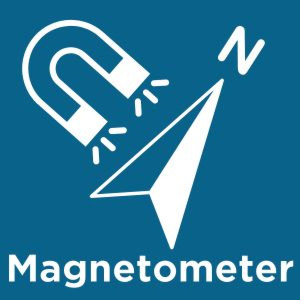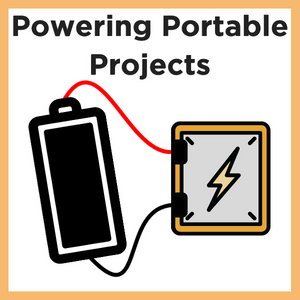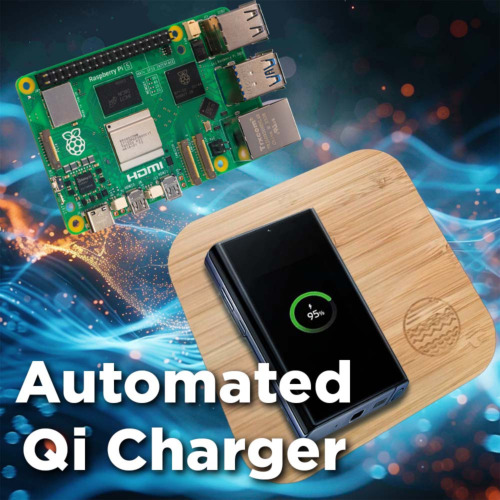ACS37800KMACTR-030B3-I2C Power Monitor Carrier with Secondary I²C Isolation
Available with a lead time
Expect dispatch between Dec 18 and Dec 22
Quantity Discounts:
- 6+ $54.28 (exc GST)
- 12+ $52.59 (exc GST)
Pololu are offering these breakout boards with support from Allegro Microsystems as an easy way to use or evaluate their ACS37800KMACTR-030B3-I2C isolated power monitoring IC; Pololu therefore recommend careful reading of the ACS37800 datasheet (4MB pdf) before using this product. The following list details some of the sensor’s key features:
- Measures voltage and current, both RMS and instantaneous
- Works in single-phase AC and DC systems
- Automatic zero-crossing detection and averaging
- Calculates active, reactive, and apparent power, as well as power factor
- 1 kHz bandwidth
- Hall effect-based current sensor with electrically isolated current path
- Sensor can be inserted anywhere along the current path
- Differential Hall sensing rejects errors from common-mode fields (e.g. Earth’s magnetic field)
- Low conductive path resistance (0.85 mO in ACS37800, PCB uses 2 oz copper)
- Board includes resistor network with isolation and sense resistors for measuring voltage
- Three configurable voltage measurement ranges optimized for 120 VAC, 240 VAC, and 480 VAC measurement
- 1206-size, high-voltage-rated resistors (190k pdf) on input voltage dividers
- Interface: I²C, using JST SH-style 4-pin connectors (compatible with Qwiic and STEMMA QT) or 0.1"-pitch pins
- User configuration of the IC stored in on-chip EEPROM
- Programmable over-current, under-voltage, and over-voltage detection thresholds
- Compact 1.9" ×1.8" board size with a variety of connection options
- Optionally available with terminal block already soldered
- Routed slots for higher creepage
- Secondary isolation for I²C signals and logic power provides additional safety and measurement accuracy
Details for item #5410
This version of the ACS37800 power monitor carrier does not have a terminal block soldered or included. Both voltage measurement range jumpers are open, configuring the board to measure up to 120 VRMS by default.
Other versions are available with a soldered terminal block and with a soldered terminal block and jumpers configured for 240 VRMS.
Using the sensor
The ACS37800 measures current flowing from the IP+ to the IP- connection points; these pins are labeled on the board’s top silkscreen, which also shows the direction that is interpreted as positive current flow via the +i arrow. It measures voltage between IP+ and the connection points on the left side of the board (labeled V- in the schematic), with positive readings corresponding to a higher voltage on IP+. The left-side through-holes are all electrically connected, so one convenient way to make connections to the board is to attach your power supply to the inner set of connection points and your load to the outer set, as shown in the diagram below. (Alternatively, you can connect the negative sides of your load and power supply directly together, then add a separate connection from there to V-.)
When measuring DC systems, matching the polarities in this diagram will produce positive current readings when current flows from the power supply to the load and positive voltage readings when the supply has a higher voltage on its positive terminal than its negative terminal. In AC systems, the polarities are less important, though they might still be meaningful for the instantaneous voltage and current readings provided by the ACS37800.
On the logic side, the sensor has four required connections: logic power (VCC and GND) and I²C clock and data signals (SCL and SDA). These connections can be made through either of the board’s two JST SH-style 4-pin connectors, which are compatible with SparkFun’s Qwiic and Adafruit’s STEMMA QT (the second connector can be used to chain additional I²C devices), or with a set of through-holes that are spaced with a 0.1" (2.54 mm) pitch and compatible with 0.1" male headers and solderless breadboards.
The carrier board configures the ACS37800 to use a 7-bit I²C target address of 0b1100000 (0x60 or 96) by default. However, the target address can be changed by reprogramming the EEPROM, as can many other configuration settings.
A logic supply voltage of 3 V to 5.5 V should be connected across VCC and GND. SCL and SDA are pulled up to this voltage, so VCC should match the logic level voltage of your I²C bus. VCC powers the ACS37800 through the on-board isolated DC-DC power module, which provides a regulated 3.3 V supply to the sensor, and the on-board I²C isolator also acts as a level shifter between the external I²C voltage level and the 3.3 V used by the sensor. This secondary layer of isolation makes it less likely for safety and measurement accuracy to be inadvertently compromised, such as if the board’s logic supply shares a ground with the system being measured.
An additional pin, EN, is brought out to the 0.1"-pitch through-holes. This is the enable input for the isolated power module and is pulled up to enable it by default. EN can be driven low to disable the board’s logic power and put it into a low-power state (note that the part of the circuit powered by VCC on the external side of the isolation barrier is not powered down).
You can make connections to the bare carrier board in a variety of ways. The largest through-holes are 4 mm in diameter with 12.5 mm spacing. These can be used with #6 or M3.5 screws for attaching various types of lugs or solderless ring terminals, or thick wires up to 10 AWG can be soldered directly to the board. The slots above the large through-holes can accommodate a 4-pin terminal block or other connector with a pitch between 9.5 mm and 12 mm. Pololu offer versions of this board with a soldered terminal block, the Amphenol YK4410403000G, which is rated up to 300V; another example of a compatible terminal block is the Eaton CB30220407, which is rated up to 600V. Holes with 0.1" and 0.2" (5 mm) spacing are also available for connecting male header pins or terminal blocks, but please note that these smaller connection options are generally not suitable for high currents like those this sensor is intended for.
Creepage and high voltage considerations
This product is not designed to or certified for any particular high-voltage safety standard. The PCB traces are laid out to provide at least 5 mm of creepage between the high-voltage input lines and 4 mm across each of the two high-voltage, 1206-size resistors that has an isolation slot routed under it. The secondary isolation to the I²C user interface also has creepage of greater than 4 mm. A rough rule of thumb is that uncontaminated FR4 PCBs should have approximately 1 mm of creepage per 100 VRMS of isolation.
Warning: This product is not designed to or certified for any particular high-voltage safety standard. Working with higher voltages can be extremely dangerous and should only be attempted by qualified individuals with appropriate equipment and experience.
Voltage measurement ranges
The carrier board has two surface-mount jumpers that can be used to configure one of three different voltage measurement ranges for the ACS37800. These ranges are optimized for measuring 120 V, 240 V, and 480 VAC RMS (root mean square). To facilitate over-voltage detection, each range can handle an instantaneous voltage roughly 40% higher than the nominal peak voltage (or twice the nominal RMS voltage) before the sensor’s output saturates.
By default, both jumpers are open and the 120 VRMS range is selected, unless you have the version of the board with a soldered terminal block and jumpers pre-configured for 240 VRMS.
The board has two 1 MO isolation resistors in series between each voltage sensing terminal (IP+ and V-) and the corresponding sense input pin on the ACS37800 (VINP and VINN), for a total RISO of 4 MO. See the ACS37800 datasheet for details on converting the sensor’s raw readings into actual voltages based on RSENSE and RISO.
Schematic and dimension diagrams
Real-world power dissipation considerations
The ACS37800KMACTR-030B3-I2C can measure up to ±30 A. In Pololu's tests, Pololu found that Pololu's carrier board could conduct 30 A continuously without reaching the thermal limit for the IC. Pololu's tests were conducted at approximately 25°C ambient temperature with no forced air flow.
The actual current you can pass through the sensor will depend on how well you can keep it cool. The carrier’s printed circuit board is designed to help with this by drawing heat out of the sensor chip. Solid connections to the current path pins (such as with thick soldered wires or large, tightly-secured lugs) can also help reduce heat build-up in the sensor and carrier board.
Warning: Exceeding temperature or current limits can cause permanent damage to the sensor. If you are measuring an average continuous current greater than 20 A, Pololu strongly recommend that you monitor the sensor’s temperature and look into additional cooling if necessary.
This product can get hot enough to burn you long before the chip overheats. Take care when handling this product and other components connected to it.
Dimensions
| Size: | 1.8" × 1.9" × 0.23" |
|---|---|
| Weight: | 8 g |
General specifications
| Minimum logic voltage: | 3 V |
|---|---|
| Maximum logic voltage: | 5.5 V |
Identifying markings
| PCB dev codes: | cs10a |
|---|---|
| Other PCB markings: | 0J15398 |
File downloads
ACS37800 datasheet (4MB pdf)
CHV1206-FX-1004EST 1MO high-voltage resistor datasheet (190k pdf)
Dimension diagram of the ACS37800KMACTR-030B3-I2C Power Monitor Carrier with Secondary I²C Isolation (497k pdf)
3D model of the ACS37800KMACTR-030B3-I2C Power Monitor Carrier with Secondary I²C Isolation (7MB step)
Drill guide for the ACS37800KMACTR-030B3-I2C Power Monitor Carrier with Secondary I²C Isolation (57k dxf)
This DXF drawing shows the locations of all of the board’s holes.
Recommended links
Allegro product page for the ACS37800, where you can find application notes and other resources.
Exact shipping can be calculated on the view cart page (no login required).
Products that weigh more than 0.5 KG may cost more than what's shown (for example, test equipment, machines, >500mL liquids, etc).
We deliver Australia-wide with these options (depends on the final destination - you can get a quote on the view cart page):
- $3+ for Stamped Mail (typically 10+ business days, not tracked, only available on selected small items)
- $7+ for Standard Post (typically 6+ business days, tracked)
- $11+ for Express Post (typically 2+ business days, tracked)
- Pickup - Free! Only available to customers who live in the Newcastle region (must order online and only pickup after we email to notify you the order is ready). Orders placed after 2PM may not be ready until the following business day.
Non-metro addresses in WA, NT, SA & TAS can take 2+ days in addition to the above information.
Some batteries (such as LiPo) can't be shipped by Air. During checkout, Express Post and International Methods will not be an option if you have that type of battery in your shopping cart.
International Orders - the following rates are for New Zealand and will vary for other countries:
- $12+ for Pack and Track (3+ days, tracked)
- $16+ for Express International (2-5 days, tracked)
If you order lots of gear, the postage amount will increase based on the weight of your order.
Our physical address (here's a PDF which includes other key business details):
40 Aruma Place
Cardiff
NSW, 2285
Australia
Take a look at our customer service page if you have other questions such as "do we do purchase orders" (yes!) or "are prices GST inclusive" (yes they are!). We're here to help - get in touch with us to talk shop.
Have a product question? We're here to help!
Guides
PiicoDev Magnetometer- Getting Started Guide
The Maker Revolution
Powering Portable Projects: Batteries
Projects
Wireless QI Phone Charger Powered by Raspberry Pi
Makers love reviews as much as you do, please follow this link to review the products you have purchased.














Product Comments